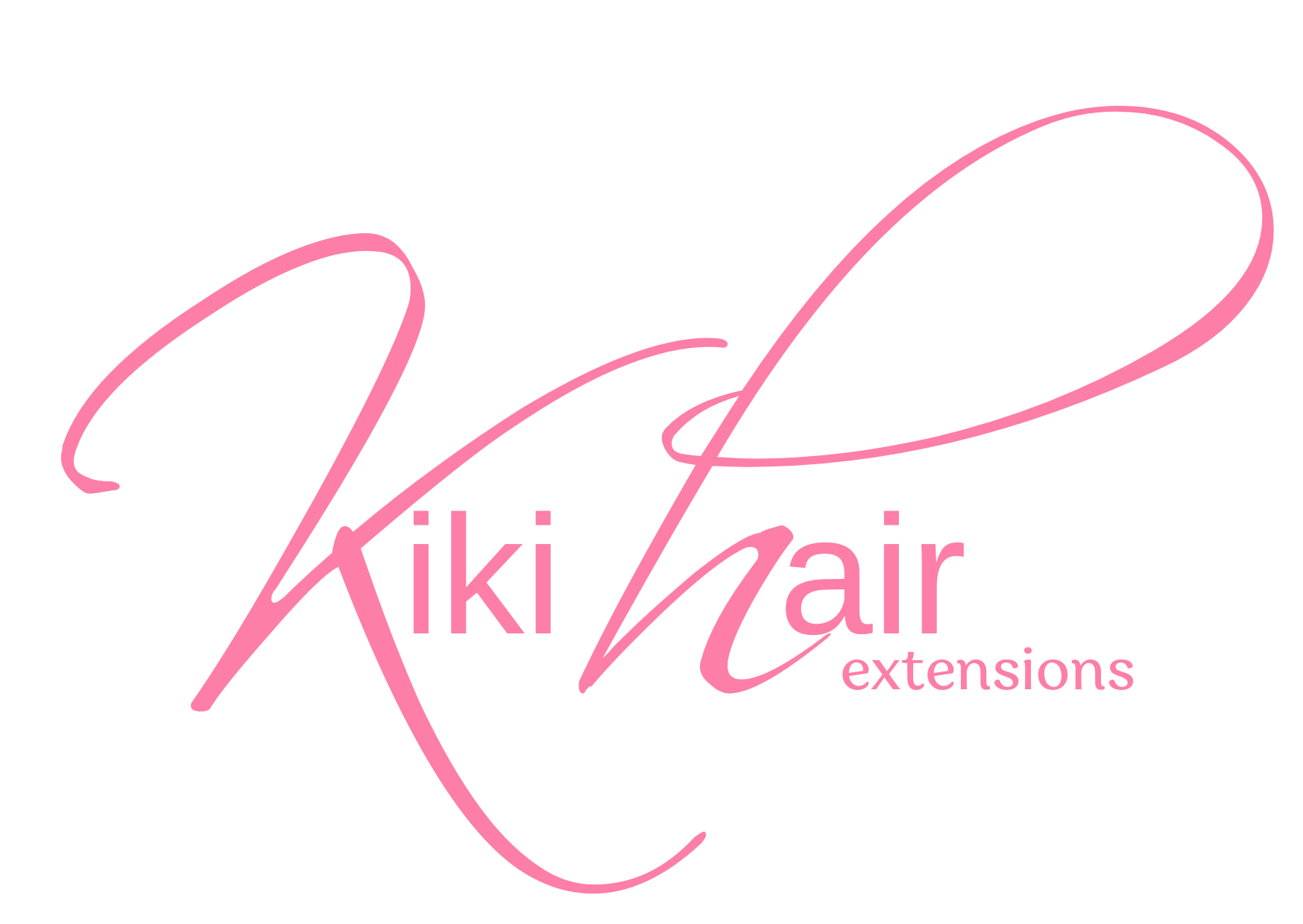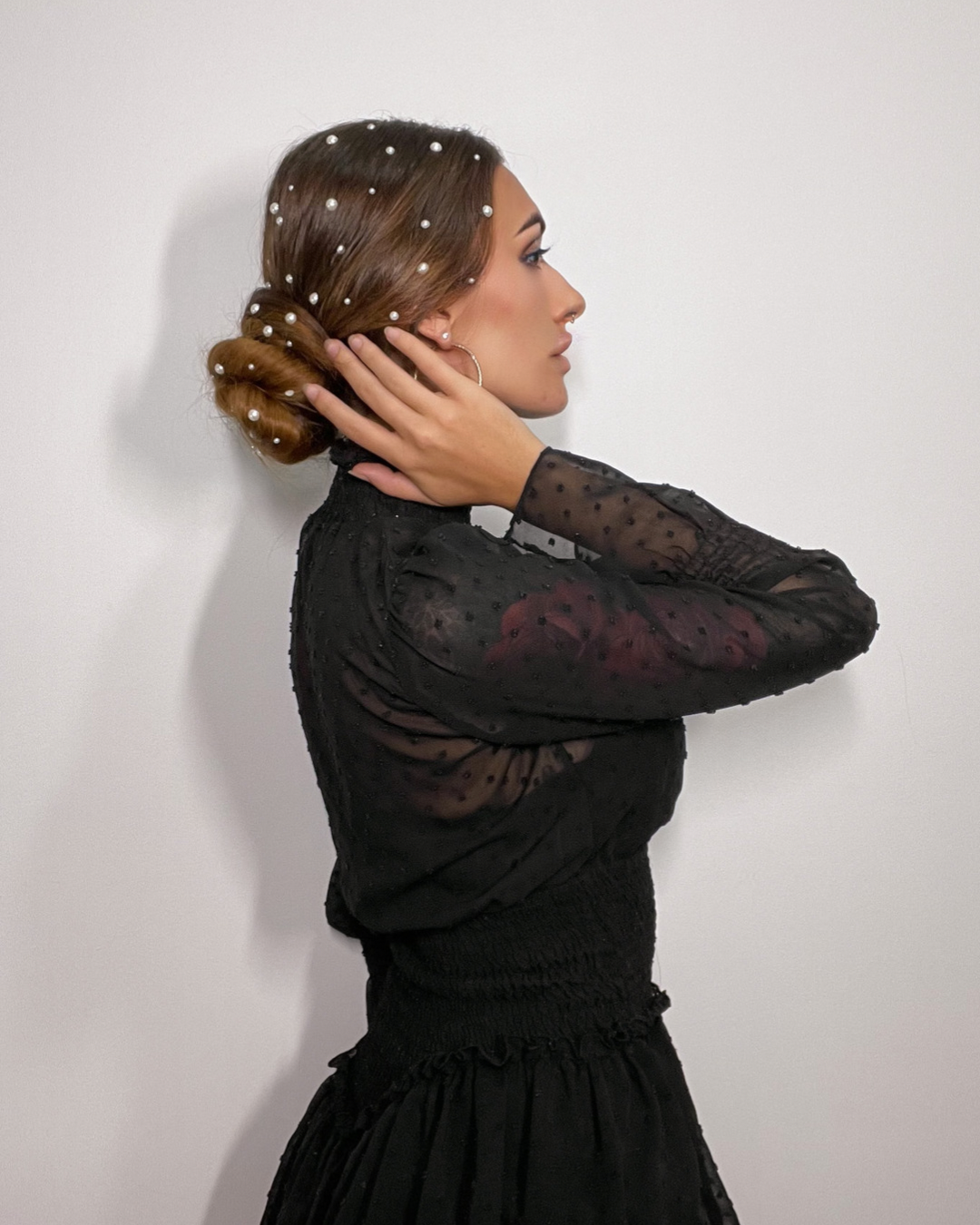
how to apply weft hair extensions with beads
Introduction to Weft Hair Extensions
What Are Weft Hair Extensions?
Weft hair extensions are a popular hairstyle upgrade made up of strands woven onto a thin cloth strip or "weft." This technique creates a seamless look by providing a continuous row of hair that can be customized to fit any head size. They differ from individual extensions as they cover larger areas and provide volume and length across the entire scalp. Weft extensions can be applied using various methods, including beading, which is known for its durability and ease of maintenance.
Benefits of Choosing Weft Hair Extensions
When it comes to hair extensions, weft hair extensions are a game-changer. Offering a blend of value and versatility, they are an excellent choice for anyone looking to add volume or length to their natural hair. Here are some of the top benefits of choosing weft hair extensions with the beading method:
- Minimal Damage: Unlike some extensions that can stress the hair follicle, beaded wefts distribute weight evenly, lessening the chance of damage.
- Long-Lasting: With proper care, beaded weft hair extensions can last many months.
- Natural Look: They can be placed strategically to blend seamlessly with your natural hair for a flawless finish.
- Comfort: Beaded wefts are known for their comfort, as there is no need for heat or glue.
- Versatile Styling: You can style your hair in various ways with weft extensions, including updos and braids.
- Reusable: Weft hair extensions can be adjusted and reused, making them a cost-effective solution.
In essence, weft hair extensions provide an effective way to achieve fuller and longer hair without compromising the health of your natural tresses.
Essential Tools and Materials for Beading Method
Hair Weft Selection and Preparation
Beginning your journey with weft hair extensions using the beading method requires selecting the right type of weft and preparing it for application. Firstly, choose a hair weft that closely matches the texture and color of your natural hair. The weft can either be synthetic or human hair, with human hair being the preferred option for its versatility and natural appearance. Measure the sections of your head where the weft will be applied to determine the length of weft needed. Once you have the correct measurement, cut the weft accordingly. It's crucial to have sharp scissors to avoid fraying and to ensure a clean cut. After cutting, it's advisable to perform a quick weft inspection to check for any loose strands that could potentially cause shedding later on. Now that your hair weft is prepped and ready, you're all set to proceed with the beading process.
Beads and Tools Overview
Before you begin applying weft hair extensions using the beading method, it is crucial to have the right tools and materials at hand. Here is an overview of what you will need. Hardware includes micro beads that match the hair color and a bead loader to hold and apply these tiny items with precision. You’ll also require a beading tool or pliers, designed for securely clamping the beads onto the hair. Hair clips are also essential for sectioning and managing natural hair during the process. Additionally, it's advisable to have a tail comb for accurate sectioning, and scissors tailored for hair to cut the wefts as needed. Lastly, consider purchasing a loop brush, as it’s gentle on both natural hair and extensions, and can help in maintenance and styling post-application.
Step-by-Step Guide to Applying Weft Hair Extensions with Beads
Step 1: Sectioning the Hair
To begin applying weft hair extensions using beads, the first step is to properly section the hair. This task sets the foundation for a smooth application process and utmost precision. Start by thoroughly brushing the hair to remove tangles, ensuring a clean workspace. Next, create a horizontal parting across the back of the head - this will usually be from ear to ear. Use a tail comb for accuracy. Secure the upper portion of hair out of the way with clips or a hair tie, leaving the lower section free. This exposed strip is where the weft will be applied. Remember to leave a thin layer of hair beneath to cover the beads once applied. A neat and straight parting is crucial for a seamless finish and comfortable wear.
Step 2: Bead Attachment Technique
Applying weft hair extensions using beads requires precision and care. To begin the bead attachment, select a bead that matches closely to the root color of the hair to keep it discreet. Slide the bead onto the hair extension tool, usually a loop wand or threading hook. Part a small section of natural hair where you want to place the weft. Thread this section through the bead, ensuring it lies flat against the scalp. Next, use pliers to clamp down the bead firmly but without too much pressure to avoid damaging the hair. Make sure the bead is secure but still leaves some mobility for comfort. This method will help to anchor the weft in place for the next step, creating a durable and discreet attachment point for the weft.
Step 3: Attaching the Weft
Once you have your hair sectioned and the beads in place, it's time to attach the weft. Begin by positioning the weft directly above the row of beads. Make sure the weft is straight and placed evenly across the section. Hold the weft firmly against your head and thread the needle through the weft's seam. Carefully guide the needle through the first bead, locking the weft into place. Repeat this process, moving across the section, securing each bead to the weft. Take your time to ensure the weft lies flat against the scalp without any bumps or ripples. After attaching the entire weft, gently tug on it to check that it’s held securely by the beads.
Step 4: The Crisscross Method Explained
The crisscross method is an essential part of securing weft hair extensions. This technique involves crossed threads to hold the extensions firmly in place. Here's a breakdown of the process:
- Take a small section of the natural hair on top of the bead.
- Place the weft against the bead, ensuring it lies flat against the scalp.
- Use a thread and needle to sew the weft onto the braid. Start by inserting the needle underneath the bead and through the weft.
- Now, crisscross the thread over the top of the weft and back under the next bead.
- Continue this pattern - under the bead, over the weft, and crossing over to the next bead.
- Make sure to pull each stitch tight to secure the weft close to the scalp, but not too tight to avoid discomfort.
By mastering the crisscross method, you can enjoy a durable and natural-looking installation of weft hair extensions with beads.
Step 5: Cutting and Blending the Wefts
After successfully attaching the weft using the crisscross method, the last essential step is to make your extensions look natural. Start by measuring the extensions against the length of your natural hair. Use sharp hair scissors to trim the extensions for a precise cut that blends seamlessly with your hair length. Remember to cut in a straight line and avoid any jagged edges as these can create an unnatural appearance. Once cut, use blending techniques such as point cutting or slide cutting to give a more natural finish that merges effortlessly with your natural locks. Finally, style your hair as desired to see the full effect of the blended extensions. Taking these careful steps ensures your new look is indistinguishable from your natural hair, providing a flawless finish.
Tips for a Seamless Application
Ensuring Comfort and Security
To ensure that your weft hair extensions are not only attractive but comfortable and secure as well, follow these tips. First, make sure that the beads are attached firmly but not too tightly. This balance helps prevent discomfort on the scalp. Use high-quality silicone-lined beads which grip better and protect the hair. Attach the wefts close to the scalp, yet allow a little bit of space to ensure the wefts can move naturally with your hair and scalp. Test by sliding a finger under the weft to ensure it's snug but has some give. Remember, a secure installation helps with the longevity of the style and keeps you comfortable throughout the day.
Blending the Extensions with Natural Hair
For a natural look, it's essential to blend the weft hair extensions seamlessly with your own hair. Start by choosing extensions that closely match your hair color and texture. Once the wefts are attached, use a sharp pair of hairdressing scissors to trim any excess length. Cut the wefts in a way that mirrors the layers of your natural hair for a believable blend. You can also thin out the ends of the extensions with thinning shears for a more graduated integration. Styling both your hair and the extensions together with a curling iron or flat iron will help to merge them smoothly. Remember to use heat protectant products to prevent damage to both your natural hair and the weft extensions. If you're unsure about cutting the extensions yourself, consider consulting a professional stylist for the initial blend.
Aftercare and Maintenance of Beaded Weft Extensions
Routine Maintenance Tips
To keep beaded weft hair extensions looking fresh and in prime condition, routine maintenance is important. Start by gently brushing your extensions daily with a soft-bristle brush to prevent tangles, focusing on the bottom of the hair and working your way up to the roots. It's crucial to use a brush specifically designed for extensions to avoid pulling on the beads. Sleep with your hair in a loose braid or ponytail to minimize friction and tangling overnight. Make sure the beads are not too tight; slight looseness helps reduce scalp tension. Additionally, avoid using heavy products or oils near the beads to prevent slippage. Regularly schedule appointments with your stylist for check-ups and tightening, typically every 4-6 weeks, to ensure the beads and weft remain secure. Following these tips will extend the life of your weft hair extensions and keep them looking their best.
Washing and Styling Guidelines
Proper aftercare is key to maintaining the beauty and longevity of your weft hair extensions. Here are some guidelines for washing and styling your beaded weft extensions. When washing, use a gentle shampoo and apply it in a downward motion to avoid tangling. Condition only the lengths and ends of your hair, keeping conditioner away from the beads to prevent slippage. Pat your hair dry with a towel and avoid rubbing. For styling, use a low heat setting on hair dryers and styling tools to prevent damage to the wefts. Brush gently with a soft bristle brush or a wide-toothed comb, starting from the ends and slowly working your way up to the roots. Avoid tight hairstyles that may pull on the beads and wefts. For best results, consult with your stylist for personalized advice based on your hair type and extension method.
Troubleshooting Common Issues with Beaded Wefts
Addressing Slippage and Discomfort
If you're experiencing slippage or discomfort with your beaded weft hair extensions, it's essential to address these issues promptly. Slippage often occurs when the beads are not clamped tightly enough to the natural hair. To rectify this, it's advisable to use pliers to gently but firmly close the beads until they are secure, ensuring that they do not slide down the hair shaft. Additionally, discomfort can arise from beads that are too tight, placed too close to the scalp, or if there's an uneven distribution of weight from the wefts. To alleviate discomfort, adjust the placement of the beads by slightly moving them away from the scalp to provide more flexibility and redistributing the wefts evenly across the head. Regular check-ups with your stylist can help prevent these issues from recurring. Remember, your comfort is key to enjoying your beautiful beaded weft extensions.
Fixing Loose Beads and Wefts Problems
When working with beaded weft hair extensions, it's not uncommon to encounter issues with loosening beads or wefts. Here's a step-by-step guide to fixing these problems:
- Check Each Bead: Begin by inspecting each bead for signs of wear or damage. If a bead looks unusually wide or stretched, it's time to replace it.
- Tighten the Beads: Use the pliers to gently clamp down on the beads that appear loose. Do this cautiously to avoid damaging the natural hair or the weft.
- Re-Attach the Weft: If the weft itself has come loose, you need to reinsert the hair through the beads and clamp them shut once again.
- Seek Professional Help: If you're unable to fix the issues yourself or if the problem persists, it's wise to consult a professional hairstylist.
Remember that regular maintenance keeps these issues at bay. Make a habit to occasionally check the integrity of the beads and weft to ensure they remain secure and comfortable.
Conclusion
Recap of Beaded Weft Application
In wrapping up the guide on applying weft hair extensions with beads, it's important to recap the critical steps we've covered. Starting with proper hair sectioning ensures ease of application. Following this, choosing the right beads and attaching them securely is crucial for the next step. We then proceeded with attaching the weft firmly to the beads using the crisscross technique for added durability and a natural finish. Lastly, cutting and blending the wefts seamlessly integrates them with natural hair, creating an undetectable look. Remember, practice makes perfect, and patience is key to achieving professional-looking results at home.
Final Thoughts on Weft Hair Extensions
As we've explored the world of weft hair extensions, specifically the beaded method, it is clear they present an excellent way to add length and volume to one's hair. The ease of application, coupled with the versatility they offer, makes them a sought-after solution for those looking to enhance their look. Remember to select quality wefts, prepare the necessary tools, and follow the step-by-step guide carefully for the best results. After installation, consistent aftercare will maintain the beauty and longevity of your extensions. While issues like slippage and discomfort may arise, with the right know-how, they can be swiftly addressed. All in all, when done correctly, beaded weft hair extensions provide a transformative experience with minimal damage to natural hair, affirming their place as a valuable option in the realm of hair styling.




